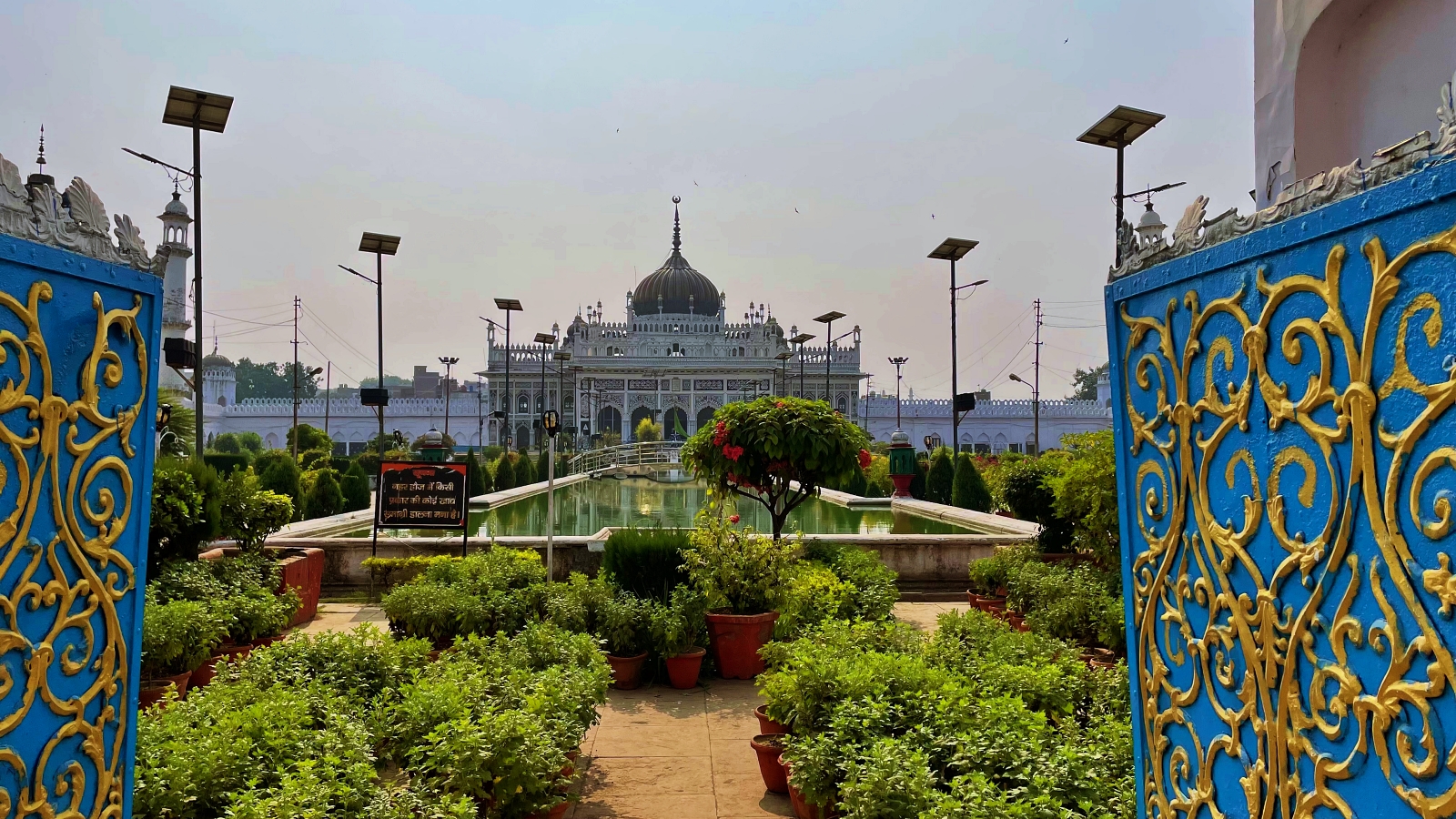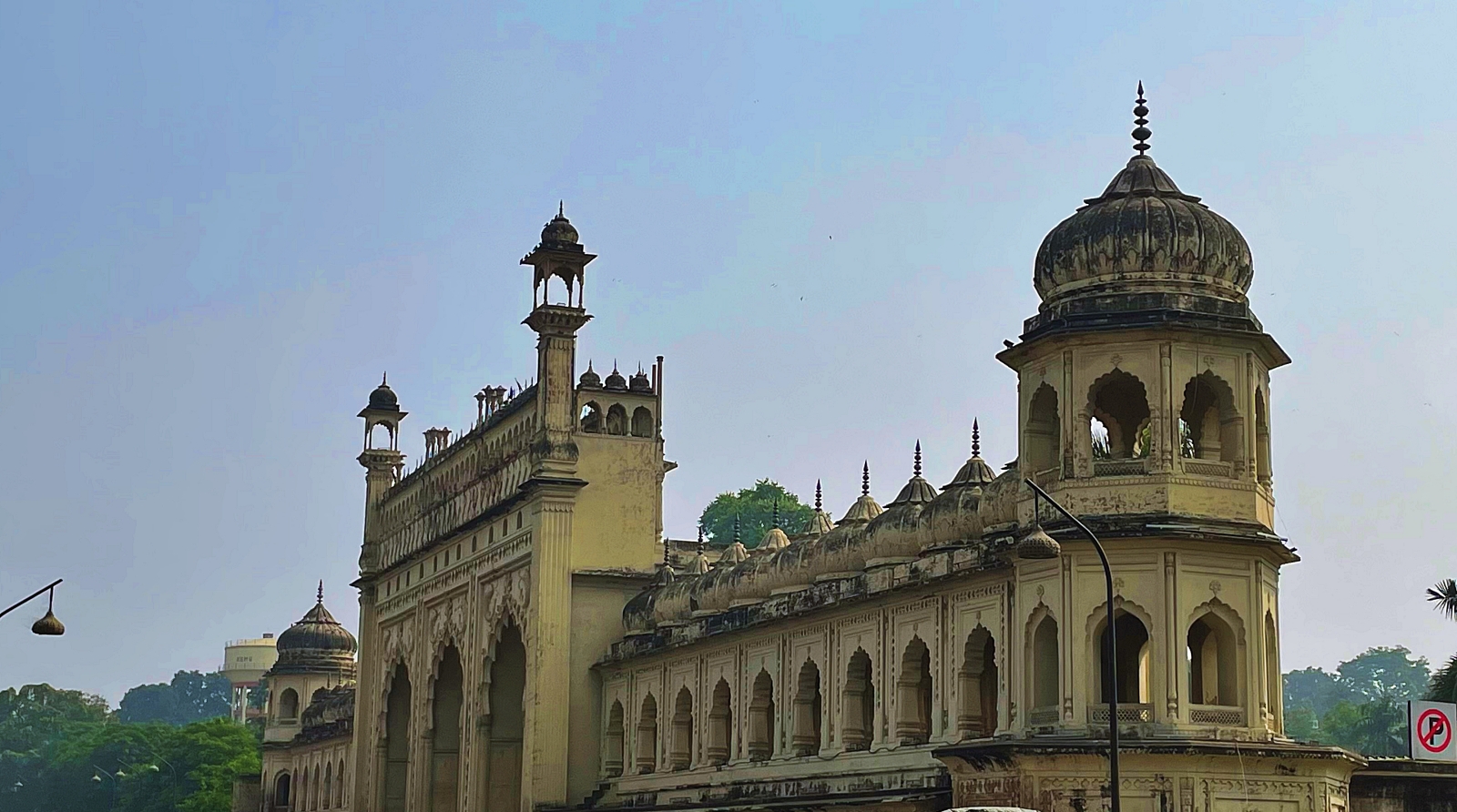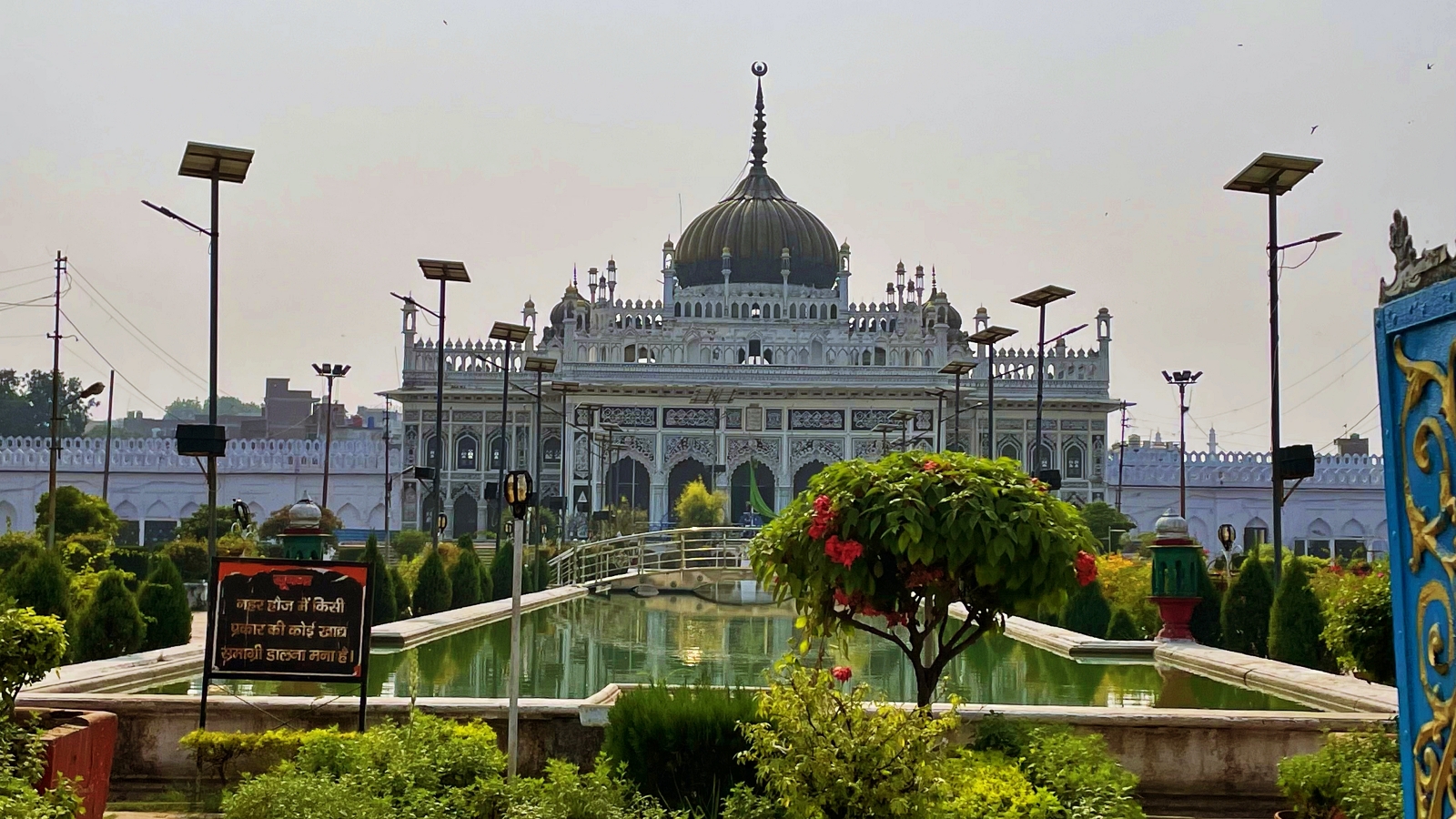Discover the Splendour of Lucknow’s Iconic Imamabaras
When in Lucknow, you simply must visit the city’s famed Imambaras. These iconic landmarks are a must-see for anyone interested in history and architecture. There are two Imambaras in Lucknow, the Bara Imamabara and the Chota Imamabara, and each is well worth a visit. The Bara Imamabara is the larger of the two structures, and it’s easily recognized by its imposing dome and intricate facade.

This splendid Imambara was built in the late 18th century by Nawab Asaf-ud-Daula. The Chota Imamabara is much smaller but no less impressive. This structure was built in the early 19th century by Nawab Shuja-ud-Daula. Both Imambaras are marvellous examples of Mughal architecture, and they offer a unique glimpse into Lucknow’s rich history. If you’re visiting Lucknow, be sure to make time to see both of these iconic landmarks.
Table of Contents
Introduction to Imambaras of Lucknow
You’re probably familiar with religious places of worship called temples or churches. But have you heard of imambaras? Chances are, you haven’t. Imambaras are a very important part of Shia Islam, and they’re found primarily in India and Iran. There are two imambaras in Lucknow, India: Bara Imamabara and Chota Imamabara. The word imambara is derived from the Arabic word imam, which means “leader.” These buildings are so named because they serve as the gathering place for Shias during Muharram, the first month of the Islamic calendar.
Bara Imamabara: A Brief History
The Bara Imambara, also known as the Great Imambara, is a large complex located in Lucknow, India. It was built between 1784 and 1793 by the Nawab of Awadh, Asaf-ud-Daulah. The primary purpose of the complex was to provide a home for the tomb of his father, Ali Muhammed Khan. The Bara Imambara is an impressive sight. It’s the largest imambara in all of India, and it’s made up of a series of courtyards, halls and tombs.

The most famous part of the complex is the Hussainabad Clock Tower, which was built in 1881 and is still in operation today. The Chota Imambara is much smaller than its counterpart, but it’s no less impressive. It was built in 1839 by Nawab Sir Ghulam Mohammed Haidar Khan. The purpose of the Chota Imamabara was to serve as a place of prayer and reflection for Shia Muslims.
Why is Bara Imamabara Special?
The Bara Imamabara, or Great Imambara, is Lucknow’s most iconic imambara. It’s also the largest, and it’s said that its construction was financed by the Nawab of Awadh himself. What makes the Bara Imamabara so special? For one thing, it’s a stunning example of Mughal architecture. But its beauty isn’t just skin-deep. The Bara Imamabara also has a rich history dating back to the early 1800s. This imambara is a must-see for any visitor to Lucknow, and it’s worth a visit if you’re interested in Mughal architecture or Indian history.
Visit the Glorious Chota Imamabara
After strolling around the Bara Imamabara, make sure to set aside some time to visit the Chota Imamabara. Also known as Imambara Mubarak Begum, it was built in 1838 by Nawab Muhammad Ali Shah. The Chota Imamabara is regarded as one of Lucknow’s most beautiful architectural landmarks. The complex consists of an arched gateway at entry called a Buland Darwaza, which is flanked by towers and a large domed hall.

As you walk through the building, you will find an array of exquisite sculptures and intricate paintings that depict Hindu-Muslim unity and religious harmony. One of the highlights of Chota Imamabara is its majestic dome that stands tall in the middle of the complex – a magnificent sight to behold! Soak up the serenity of this sacred place and perhaps ponder over how it continues to be an enduring symbol of unity in Lucknow today.
Stone Carvings at Chota Imamabara
Moving on now to the Chota Imamabara, you can’t help but be in awe at the marvellous stone carvings that are found here. Whether you’re looking at the intricate arches or the stones inscribed with historical and religious texts, the craftsmanship of these artworks is truly unparalleled. The stone carvings of Chota Imamabara offer a peek into Lucknow’s traditional culture and architecture. It’s said that skilled craftsmen from all across India were employed to execute this exquisite workmanship.
This makes it a beautiful specimen of innovation, and it’s no wonder why this is one of Lucknow’s most prized architectural jewels. You can also find lovely depictions of kings and deities in the carvings here, making it a one-of-a-kind experience for those eager to explore art, culture and history. So make sure to take your time to take in all its grandeur, as there’s no rush to take in all its unique beauty!
Experience the Beauty of the Imambaras
You don’t have to be an architectural enthusiast to appreciate the beauty of Lucknow’s iconic Imambaras! Both the Bara and Chota Imambaras are stunning monuments of Indo-Islamic architecture in their own right, each with its unique charm. The Bara Imambara is known for its grandiosity and complexity, with incredible carvings and gargoyles as you walk through its halls. On the other hand, Chota Imambara is a smaller but no less impressive structure, home to delicate marble inlays and intricately crafted lattice screens.
The most interesting part is that each has its distinct style – Bara Imambara exhibits a more Mughal influence while Chota Imambara has elements of Persian architecture. Spending time appreciating these two structures will surely enchant you with the splendid beauty of Lucknow’s classical architecture!
When in Lucknow, do make it a point to visit the city’s iconic Imambaras. The Bara Imamabara and the Chota Imamabara are two of the most famous ones, and they offer a unique glimpse into Lucknow’s culture and history.



